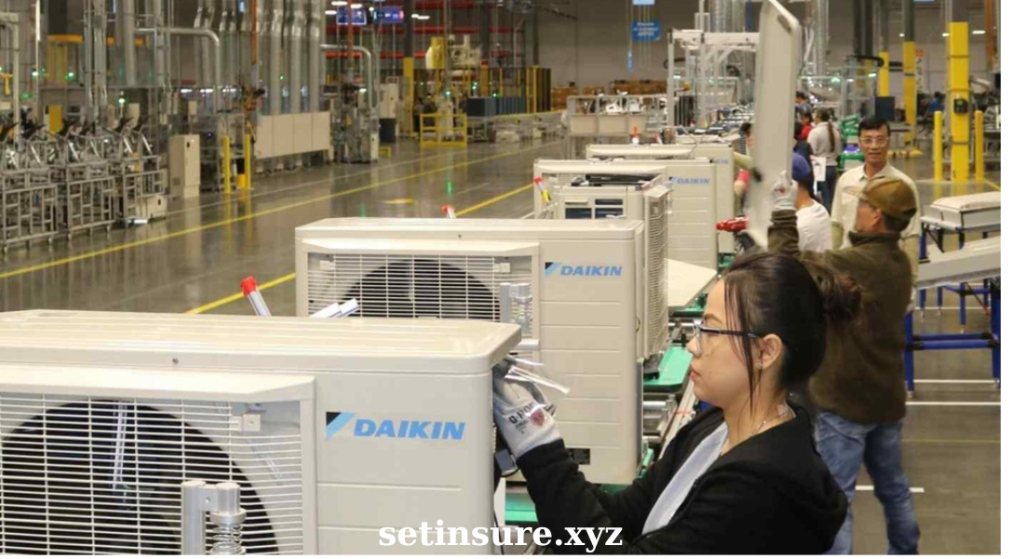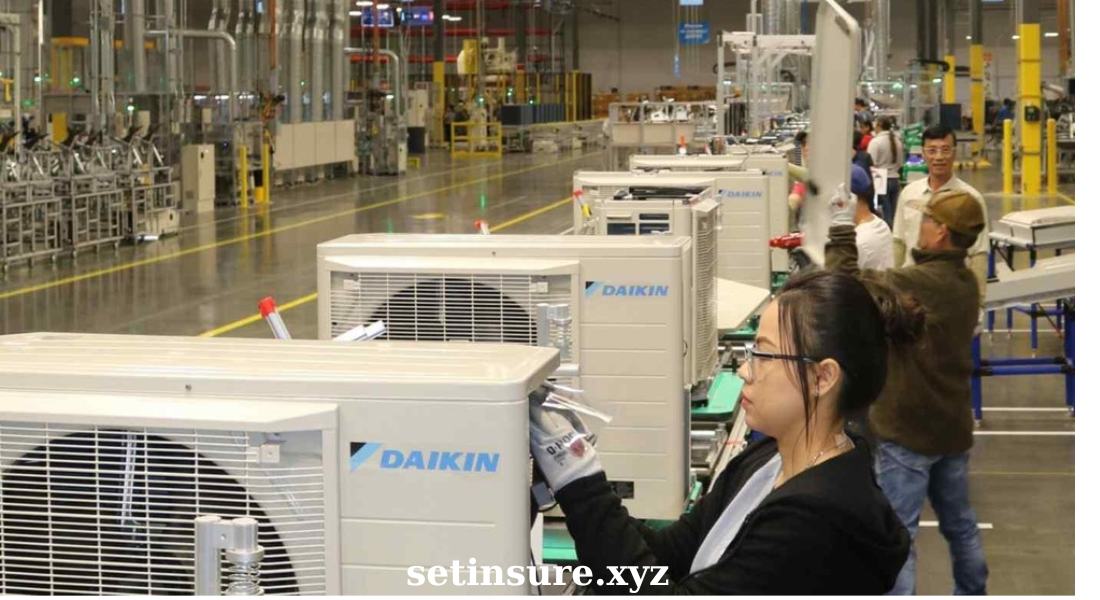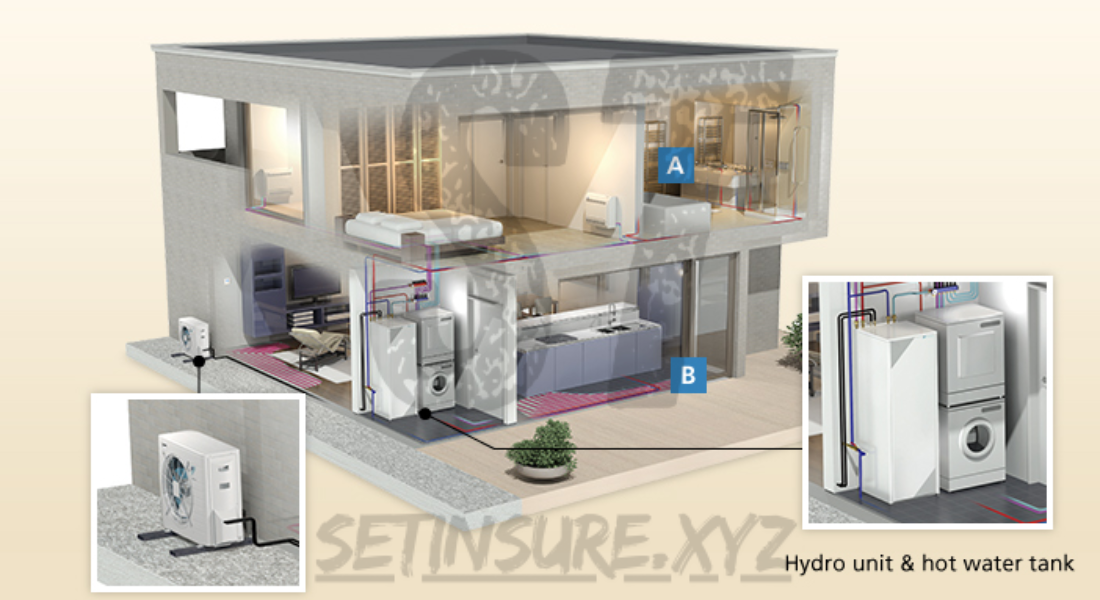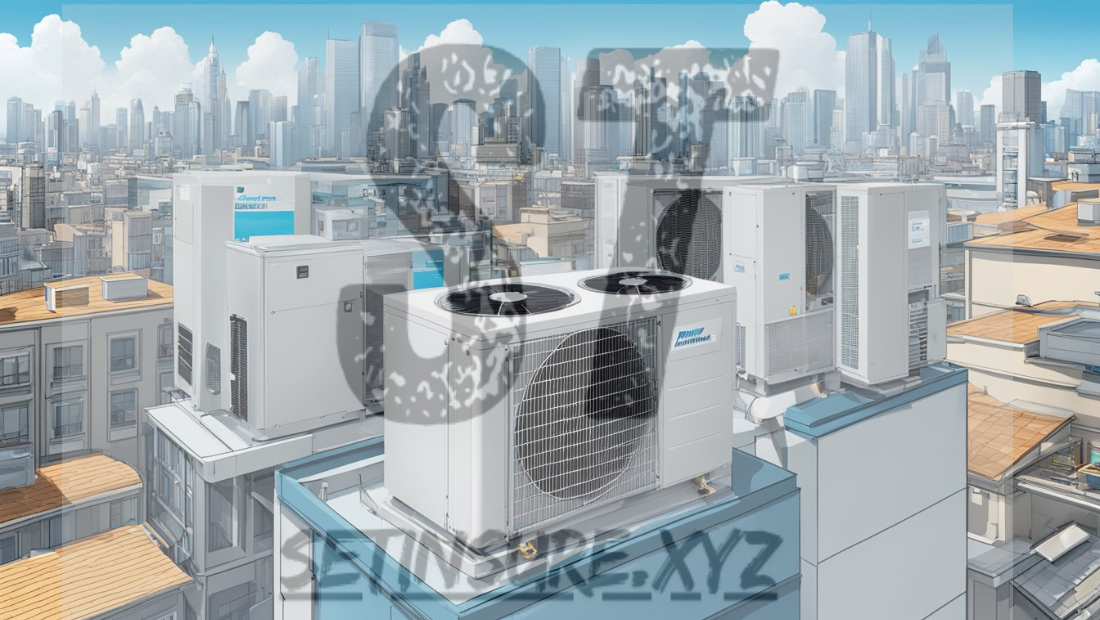The history of Daikin is a captivating narrative of innovation, resilience, and transformation. Founded in 1924 in Osaka, Japan, Daikin has grown from a small manufacturer of air conditioning units into a global leader in the HVAC (heating, ventilation, and air conditioning) industry. This article explores the key milestones of Daikin’s history, its commitment to technology and sustainability, and its ongoing impact on the world of climate control.
 The Birth of Daikin
The Birth of Daikin
1. Foundation and Early Innovations
Daikin was established by Akira Yamada as the “Osaka Kinzoku Kogyo Company.” Initially, the company focused on producing the first air conditioning units in Japan. In 1932, Daikin made a significant breakthrough with the invention of the first packaged air conditioning system, marking a pivotal moment in the history of Daikin. This innovation laid the groundwork for the company’s future success in climate control solutions.
During World War II, Daikin shifted its focus to producing military equipment. However, post-war Japan saw a surge in demand for modern air conditioning, and Daikin was well-positioned to capitalize on this need. By the late 1940s, the company resumed its air conditioning production, which became increasingly sophisticated and efficient.
2. Expansion and Technological Advancements
In the 1950s and 1960s, Daikin expanded its product lineup, introducing a variety of cooling and heating systems. The introduction of the first split-type air conditioner in 1951 was another landmark event in the history of Daikin, as it allowed for more flexible installation options in residential and commercial settings. This innovation propelled Daikin into a leading position in the Japanese market.
By the 1970s, Daikin began to explore international markets. The company established its first overseas subsidiary in the United States in 1972, marking the beginning of its global expansion. Daikin’s commitment to research and development during this period led to numerous advancements, including the launch of the inverter technology, which significantly improved energy efficiency and performance.
The Rise of Daikin as a Global Leader
1. Global Expansion
The 1980s and 1990s saw Daikin solidifying its presence in international markets. The company acquired several foreign manufacturers and expanded its distribution networks across Asia, Europe, and North America. This strategic growth allowed Daikin to adapt its products to meet diverse regional needs and preferences.
In 1993, Daikin introduced the first residential air conditioner using R-410A refrigerant, an eco-friendly alternative to traditional refrigerants. This move showcased Daikin’s commitment to sustainability and innovation, further enhancing its reputation as a leader in the HVAC industry.
2. Technological Leadership
Daikin continued to push the boundaries of technology in the 21st century. The introduction of variable refrigerant flow (VRF) systems revolutionized commercial air conditioning, providing unparalleled energy efficiency and comfort control. VRF systems allowed multiple indoor units to be connected to a single outdoor unit, significantly reducing energy consumption and installation costs.
In 2004, Daikin established a research and development center in Japan, focusing on developing cutting-edge technologies in air conditioning and refrigeration. This investment in R&D has been crucial in maintaining Daikin’s competitive edge in the industry.
Commitment to Sustainability
1. Environmental Responsibility
As the history of Daikin progressed, the company recognized the importance of environmental sustainability. In 2010, Daikin announced its “Environmental Vision 2030,” aiming to reduce greenhouse gas emissions and promote sustainable practices throughout its operations. The vision emphasizes the development of energy-efficient products and technologies that minimize environmental impact.
Daikin has also invested in renewable energy solutions, including solar-powered air conditioning systems. These initiatives not only address climate change concerns but also align with the growing global demand for eco-friendly products.
2. Achievements in Sustainability
In recent years, Daikin has received numerous accolades for its commitment to sustainability. The company has consistently ranked high in various sustainability indices, including the Dow Jones Sustainability World Index. Daikin’s efforts in developing low-GWP (global warming potential) refrigerants have set industry standards and contributed to global climate goals.
Moreover, Daikin’s commitment to energy-efficient products is evident in its extensive range of air conditioning systems, which are designed to reduce energy consumption and operational costs for consumers and businesses alike.
Daikin’s Innovations and Product Range
1. Diverse Product Portfolio
Daikin’s product range encompasses a wide variety of air conditioning solutions, catering to both residential and commercial markets. From ductless mini-split systems to large-scale VRF systems, Daikin offers options that meet the diverse needs of its customers. This versatility is a testament to the company’s dedication to innovation and quality.
Additionally, Daikin has expanded into other areas such as air purification, refrigeration, and heating systems. The introduction of smart technology and IoT (Internet of Things) capabilities in its products has further enhanced user experience, allowing for remote control and monitoring of HVAC systems.
2. Focus on Customer Experience
Understanding the importance of customer satisfaction, Daikin has invested in enhancing its service and support capabilities. The company offers comprehensive training programs for technicians and dealers to ensure the proper installation and maintenance of its products. This commitment to service excellence has solidified Daikin’s reputation as a customer-centric brand.
The Future of Daikin
1. Continued Innovation
As the history of Daikin unfolds, the company remains dedicated to innovation and technological advancement. Daikin’s ongoing research efforts aim to develop even more energy-efficient and environmentally friendly products. The brand is also exploring advancements in artificial intelligence and machine learning to enhance the functionality and efficiency of its HVAC systems.
2. Global Presence
With a robust global presence, Daikin is well-positioned to adapt to changing market dynamics and consumer preferences. The company continues to expand its footprint in emerging markets while strengthening its presence in established regions. This strategic growth will ensure that Daikin remains at the forefront of the HVAC industry.
3. Commitment to Sustainability
Looking ahead, Daikin is committed to furthering its sustainability initiatives. The company will continue to focus on reducing its carbon footprint and promoting eco-friendly practices throughout its operations. By investing in renewable energy and innovative technologies, Daikin aims to play a vital role in addressing global environmental challenges.
Conclusion
The history of Daikin is a remarkable journey of innovation, resilience, and commitment to excellence. From its humble beginnings in Japan to becoming a global leader in the HVAC industry, Daikin has consistently pushed the boundaries of technology and sustainability. The company’s dedication to providing high-quality, energy-efficient products has made it a trusted name in climate control solutions.
As Daikin continues to evolve, its focus on innovation, customer satisfaction, and environmental responsibility will undoubtedly shape the future of the HVAC industry. The brand’s rich history and commitment to excellence ensure that it will remain a key player in providing effective and sustainable climate solutions for generations to come.



